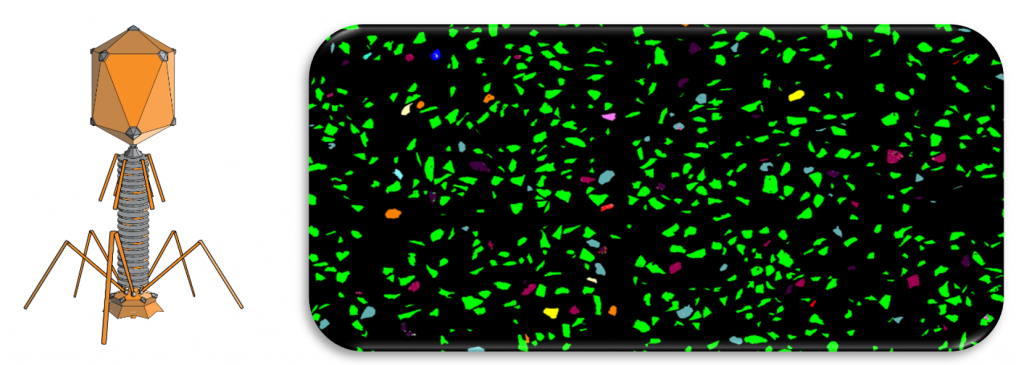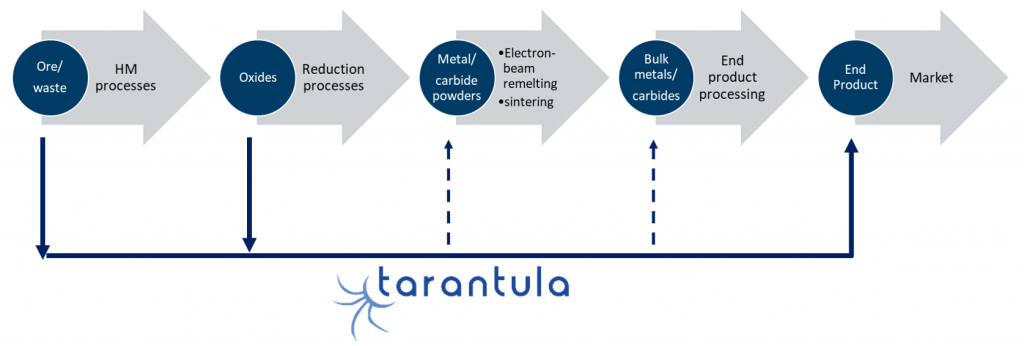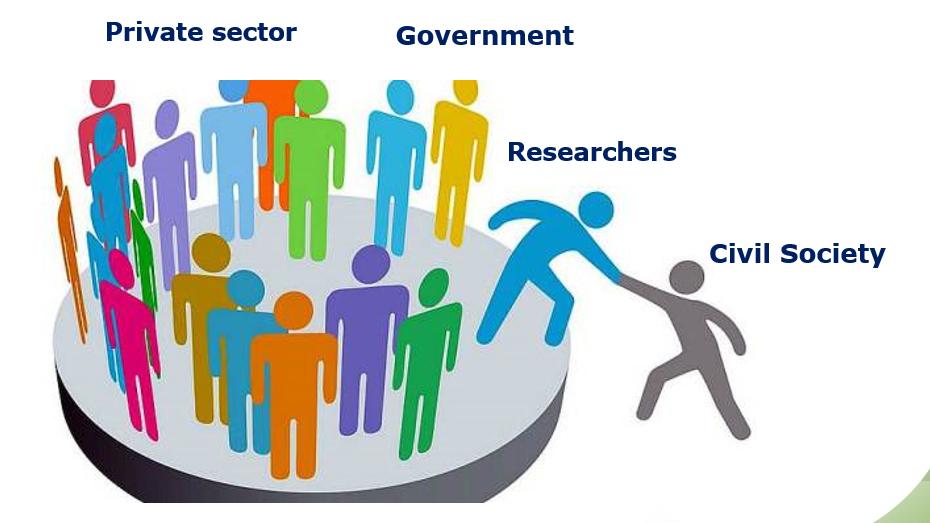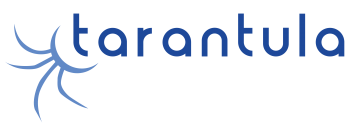WP1 - Project Management
In the WP1, the governance structure for coordinating, communicating and monitoring the work progress of the project is created.
It also deals with the ethical and gender aspects in relation to the project work plan, including the screening of reports for ethical and gender-related issues.
WP2 - Identification of European Resources of refractory metals
The activities developed in WP 2 of Tarantula aim to select in Europe the best targets for recycling critical metals like W, Nb or Ta in the tailings of old mines.
This work is part of an eco-friendly approach that will seek to develop in these waste substances particularly useful for energy transition industries; it could thus be possible to restore old, previously contaminated mining environments, either as part of a strict site restoration operation, or in anticipation of a resumption of mining activity on a former mine site. This last point could be quickly considered as an indispensable element to obtain the social license to operate.
The GKR (Geological Knowledge Representation) information system, developed by E-Mines, has retained more than 3,000 occurrences with a highly variable interest and containing or possibly containing the desired metals. These sites are not often explained in the existing data because commodities such as Nb or Ta were not included in the catalogue of previously exploited resources.
The work undertaken by the partners of this WP2 is thus to establish the metallogenic and mineralogical bases of an early diagnosis of these CRMs, and then to select the best potential candidates by explaining the criteria that led to their selection.
Field visits and selective samplings will complete this research. In particular, the site of the former Salau tungsten mine (Ariège, France) was selected because of the volume of tailings and their particularly high content of W (0.5 to 0.6% WO3) associated with significant gold grades (> 1g / t Au).
The collected data will be made available to the public by integrating them into the Raw Materials Information System (RMIS) data system.
WP3 - Supply, characterisation and preprocessing
The WP 3 is devoted to the sourcing, characterization, pre-treatment and pre-concentration of W-Nb-Ta Low grade tailings, Sn-Ta-Nb slags and W carbide scraps. Research activities are developed through a close collaboration with mining and recycling companies: Saloro operating the Barruecopardo W mine in Spain, Strategic Minerals Spain operating the Penouta Sn-Nb-Ta mine in Spain, E-Mines exploring the tailings of the historical Salau W mine in France and Cronimet, one of the leading recycler of specialty metals.
Three innovative technologies are developed within WP3 for unlocking the value of complex and low grade materials. The use of microwaves and short high voltage pulses is investigated to lower crushing and grinding energy. A disruptive approach combining the disciplines of genetic and bio engineering with mineral processing is elaborated for the development of new flotation reagents for the selective concentration of Tungsten minerals.

Figure 1: Typical tailed bacteriophage structure (left) and Classified mineralogical image of the Barruecopardo Tungsten Concentrate (right)
WP4 - Extraction and recovery of W, Nb and Ta as oxides or salts
In WP4 novel metallurgical technologies are developed (up to TRL 3-5) for the extraction and purification of metal salts or metal oxides from secondary feedstocks of W, Ta and Nb. To this end several paths are investigated, such as “green” solvometallurgy by which the entrapped W, Nb and Ta oxides will be extracted by using highly selective lixiviants like deep eutectic solvents (DES) or anhydrous mineral acids in organic solvents in order to avoid the use of water.
Non-aqueous solvent extraction methods will be developed, to recover the desired metals from the leaching solvents. Furthermore, microwave-assisted alkaline fusion will be applied to low-grade materials that will allow the subsequent selective leaching of W, Ta and Nb in water. The latter water leaching step will be integrated in a reactor system whereby simultaneous selective sorption of W, Ta and Nb will take place by newly developed, alkaline resistant clay-like sorbents.
Finally, hazardous feedstock, such as tin slags and tailings, will be subjected to alkaline leaching followed by chemical separations to remove harmful materials in a protected environment and to simultaneously recover Ta and Nb. All newly developed extraction and recovery techniques will be benchmarked against the current state-of-the-art hydrometallurgical production of W, Ta and Nb oxides.
WP5 - Novel production routes for metals (M), carbides (MC), alloys (A) and metal oxide (MO) coatings
The Objective of WP5 is the demonstration of novel and efficient production routes for metal (W, Ta, Nb) and alloys, carbides and metal-oxide layers using up-graded metal oxide feeds, as well as non-leached feedstocks.
Several innovative technologies will be applied, based on Electrodeposition from Molten Salts Media and Solution Precursor Plasma Spraying using as feed non-leachated materials, as well as pure metal oxides obtained by the partners. The products obtained are high purity metals, carbides and oxide layers ready to be used in market products using cost effective, flexible, simple and environmentally friendly processes.

WP6 - Sustainability assessment and selection of optimal flowsheet
The main goal of the WP6 is to assure that technical, environmental, economic and societal issues are addressed in the upscaling of TARANTULA technologies.
To achieve this, it is necessary to address first technologies’ sustainability in an early stage of development, taking into account their environmental and economic impact. This will be done through the application of widely spread and long established methodologies such as LCA and LCC, and then integrating both assessments to obtain an eco-efficiency parameter that allow comparisons between technologies. Early identification of potential hotspots in WP3, WP4 and WP5 processes will enable optimisation of TARANTULA technologies before upscaling. The selection of the flowsheet to be upscaled will be based on these assessments, as well as on technical issues (e.g. compatibility between the different technologies).
When upscaling, technical recommendations will be given to WP7 using a Multidisciplinary Design Optimisation approach, in order to obtain the best compromise solution accounting for productivity, resource and cost efficiency and environmental impact, and will allow to address the technical feasibility and the economic characteristics of the proposed system. Social aspect will be also considered in upscaling, developing guidelines and recommendations relying on the sustainability assessments done in this WP and on the work carried out in WP8 regarding civil society and societal engagement. Besides, a public document will include general recommendations for commercial upscaling.
Efforts in this WP will contribute to achieve TARANTULA’s main objective by allowing project partners to benchmark the environmental and economic performance of these novel technologies with SoA processing lines
WP7 - Prototype validation of most promising routes at kg level
In WP7, the most promising route for the valorization of the metals of interest (W, Ta and Nb) from mineral wastes is validated at kg production level (TRL 5). To this aim, the industrial specifications -main incomes and outputs of the process- must be carefully identified. The research activities developed in previous WPs (WP3, WP4 and WP5) will support this task. In parallel, a feasibility study of the most promising route (identified in WP6) will be performed to assess the validation of this new technology. The feasibility and industrial specifications analysis will be the tools to start the Process Design.
This task will yield the flow-sheet of the process where mass and energy balances will be implemented (MATLAB and/or EES software will be used to achieve this goal). The results of Conceptual engineering will be further developed to upscale the current TRL up to TRL 5 for kg production of W, Nb and Ta. Finally, the construction, testing and validation of a prototype to evaluate the selected route is considered one of the main outputs of the TARANTULA projects, where the validation of produced Nb in steel is also foreseen.
WP8 - Communication, dissemination, exploitation & clustering
The WP8 combines the tasks on communication, dissemination, exploitation & clustering. Its objectives are to develop a pro-active engagement of relevant stakeholders for obtaining and maintaining the Social License to Operate (SLO). More precisely, the WP will:
- Develop tailored dissemination activities for TARANTULA’s research results in view of maximum exploitation;
- Arrange and set up the post-project life of TARANTULA’s solutions, based on a detailed uptake plan, market analysis and business plan;
- Manage, protect and find agreements on TARANTULA’s foreground;
Several tasks are identified:
- Stakeholder analysis and engagement
- Develop and execute dissemination and communication strategies (incl. data management)
- Civil society engagement
- Market analysis and exploitation routes
- Workshops targeting industrial audiences
- Identification and updating of related projects
- Contribution to clustering workshops and activities
The broad stakeholder analysis feeds into the different other tasks and allows to identify the target audiences to develop an adequate engagement strategy considering the specificities and the different interest of the various groups (civil society, industry, other projects, etc.).

WP9 - Ethics requirements
This work package sets out the ‘ethics requirements’ that the project must comply with.
